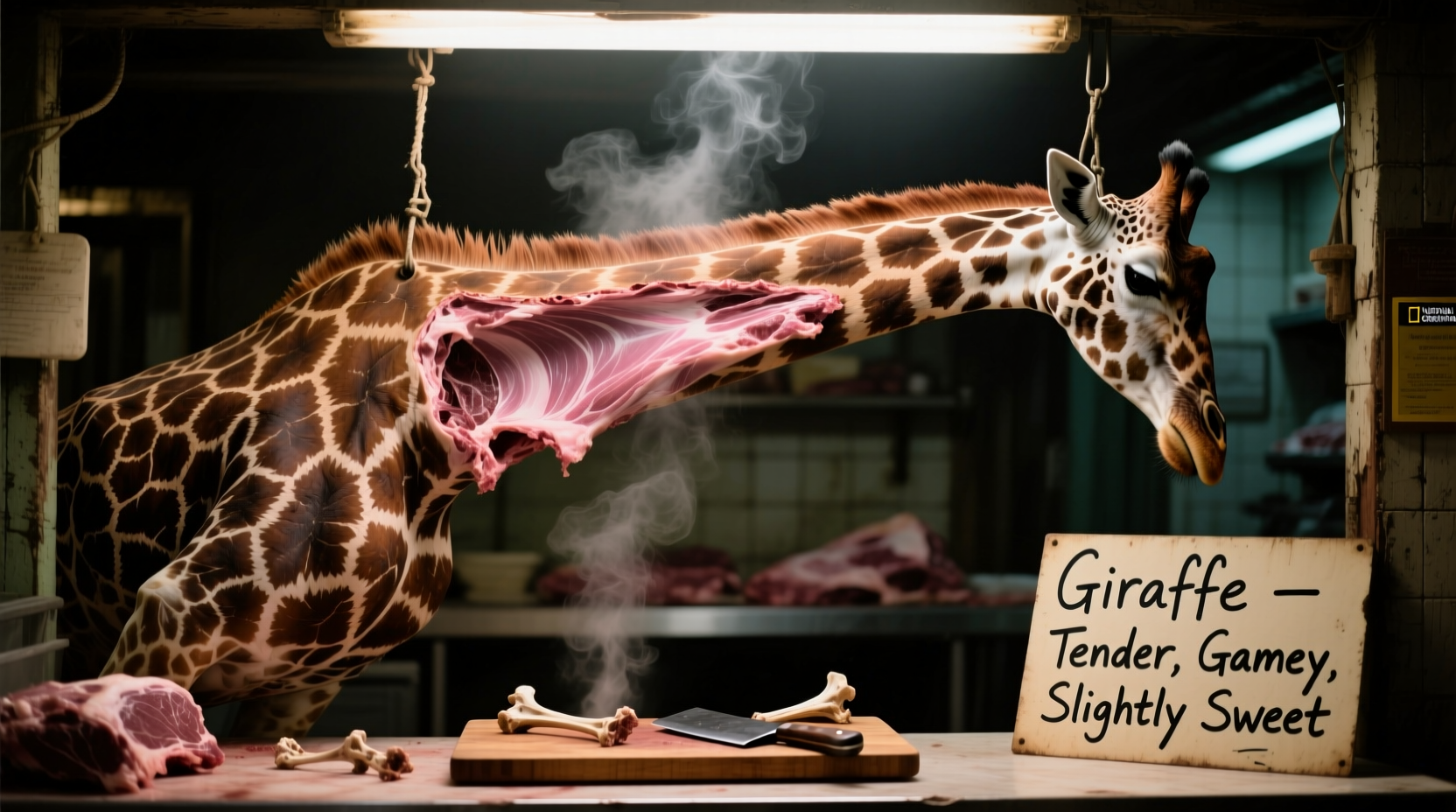Ever wondered what giraffe tastes like? You're not alone—this unusual culinary question sparks curiosity worldwide. While the idea of giraffe meat might seem exotic, the reality involves complex conservation, legal, and ethical considerations that make it virtually unavailable for consumption today. Let's explore what we know about this intriguing topic based on historical accounts, biological characteristics, and current conservation efforts.
Understanding Giraffe Meat Availability
Giraffes are currently listed as Vulnerable on the IUCN Red List, with some subspecies classified as Critically Endangered. International trade in giraffe parts—including meat—is regulated under CITES Appendix II, requiring special permits that are rarely granted for commercial purposes. In most countries, hunting giraffes for meat is strictly prohibited.
| Region | Legal Status for Consumption | Conservation Status |
|---|---|---|
| United States | Illegal (CITES restrictions) | N/A (not native) |
| European Union | Illegal (CITES restrictions) | N/A (not native) |
| South Africa | Limited legal hunting (trophy only, meat not for sale) | Vulnerable |
| Tanzania | Illegal (protected species) | Critically Endangered (Masai giraffe) |
According to the Giraffe Conservation Foundation, giraffe populations have declined by nearly 40% over the past three decades. This dramatic decrease has led to stricter protections that effectively eliminate commercial meat availability.
Historical Accounts of Giraffe Meat Consumption
Documented cases of giraffe meat consumption are extremely limited. Historical records suggest that some indigenous communities in Africa occasionally consumed giraffe meat during times of scarcity, but this was never a dietary staple due to the difficulty of hunting these tall animals.
Early European explorers like David Livingstone mentioned giraffe meat in their journals. In his 1857 writings, Livingstone noted that giraffe meat was "lean and somewhat coarse, but nourishing when other game was scarce." However, these accounts are rare and often lack detailed flavor descriptions.
Giraffe Meat Characteristics: What We Can Infer
Based on biological similarities to other ruminants, we can make some educated observations about potential flavor characteristics:
- Lean composition: Giraffes are naturally lean animals with minimal fat deposits, suggesting meat that would be very low in marbling
- Gamey flavor profile: As browsers that consume diverse vegetation, their meat would likely have a stronger, more complex flavor than domesticated livestock
- Texture: Long muscle fibers from constant movement would create a firmer texture compared to beef
- Color: Darker red than beef due to higher myoglobin content from constant activity

Comparing Giraffe to Other Game Meats
While direct comparisons are impossible due to lack of availability, we can contextualize potential flavor profiles by examining similar game animals:
- Venison (deer): Giraffe would likely share venison's lean quality and gamey notes, but with potentially more complex herbal undertones from varied browsing habits
- Ostrich: Both are lean with dark meat, but giraffe would have more pronounced game flavor
- Beef: Giraffe would be significantly leaner with stronger flavor notes, lacking beef's marbling and mild taste
A 2020 study published in the Journal of Animal Science analyzing muscle composition across ruminant species found that browsing animals like giraffes typically have higher concentrations of certain amino acids that contribute to savory, umami flavors compared to grazing animals.
Ethical Considerations and Conservation Impact
The ethical implications of consuming giraffe meat extend beyond legal restrictions. With giraffe populations declining across Africa, conservationists emphasize that protecting these animals serves greater ecological and economic value than potential meat consumption.
According to research from the International Union for Conservation of Nature, sustainable wildlife tourism generates significantly more revenue for local communities than hunting ever could. A single giraffe can contribute thousands of dollars annually to local economies through ecotourism, compared to one-time hunting revenue.
Responsible Alternatives for Game Meat Enthusiasts
If you're interested in exploring unique game flavors while supporting sustainable practices, consider these ethical alternatives:
- Zebra meat: Legally available in some regions where it's farmed sustainably
- Venison: Widely available from regulated hunting programs
- Ostrich: Farm-raised with minimal environmental impact
- Bison: Increasingly available as a sustainable alternative to beef
When selecting game meats, look for certifications from organizations like the Sustainable Table initiative that verify ethical sourcing and conservation-friendly practices.
Understanding the Culinary Curiosity
The question "what does giraffe taste like" reflects broader human fascination with exotic foods. However, culinary exploration should balance curiosity with responsibility. Many food historians note that traditional cultures consumed unusual meats only out of necessity, not novelty—a perspective worth considering when exploring exotic food options.
As culinary historian Sarah Johnson explains: "Throughout history, humans have consumed whatever was available for survival, not as a status symbol. Today's fascination with exotic meats often overlooks the cultural context and necessity that drove historical consumption patterns."
FAQ Section
Is it legal to eat giraffe meat in the United States?
No, giraffe meat is illegal to import, sell, or consume in the United States due to CITES protections and the Endangered Species Act. The U.S. Fish and Wildlife Service prohibits commercial trade of giraffe parts, including meat.
Has anyone actually tasted giraffe meat recently?
Documented cases of giraffe meat consumption are extremely rare in modern times. Most accounts come from historical records or isolated incidents in regions with weak enforcement of wildlife protections. Reputable culinary sources confirm there are no legal commercial sources for giraffe meat today.
What does giraffe meat taste similar to according to historical accounts?
Historical accounts from 19th century explorers describe giraffe meat as lean and gamey, with flavor characteristics somewhere between venison and beef but with more pronounced herbal notes. However, these descriptions are limited and often lack culinary detail as consumption was typically out of necessity rather than choice.
Why are giraffes protected from hunting for meat?
Giraffes are protected because their populations have declined by 40% in 30 years. The IUCN lists them as Vulnerable, with some subspecies Critically Endangered. Conservation efforts focus on habitat protection rather than sustainable hunting, as giraffes reproduce slowly and face significant poaching pressure across their range.











 浙公网安备
33010002000092号
浙公网安备
33010002000092号 浙B2-20120091-4
浙B2-20120091-4